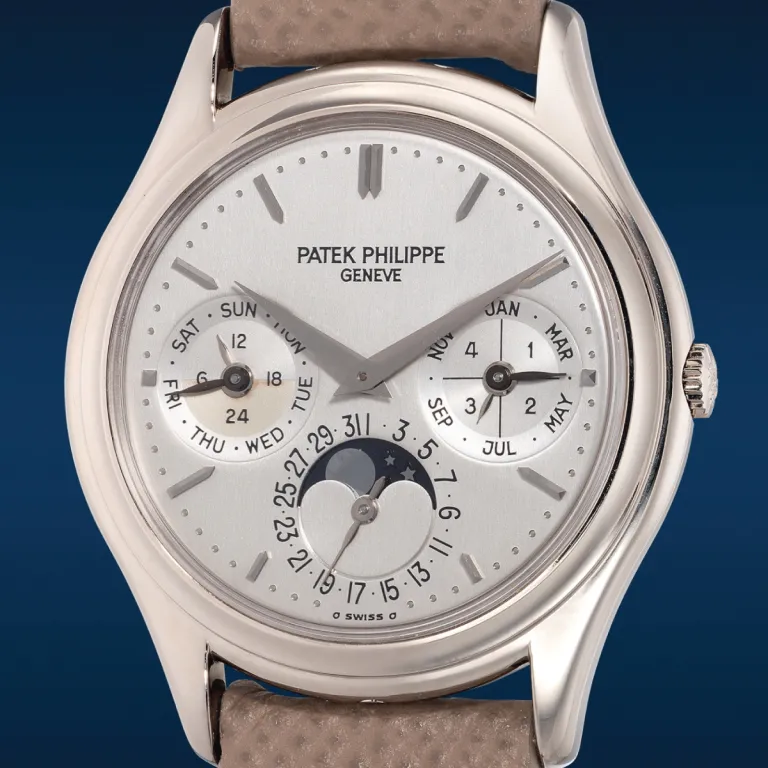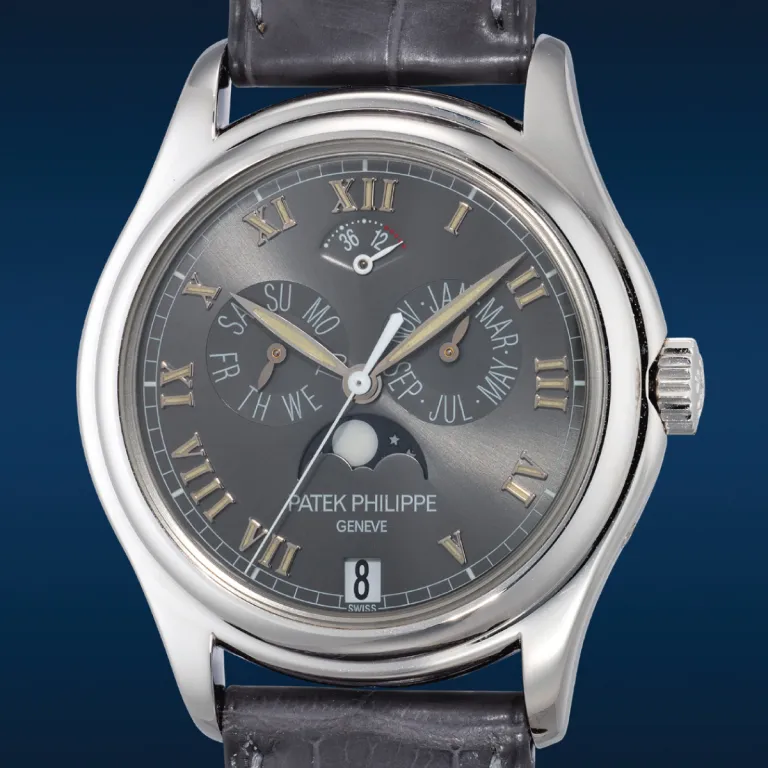White Gold Fake Patek Philippe Perpetual Calendar
It wasn’t that long ago that perfect replica Patek Philippe was still making perpetual calendars at the “correct” size of 36 mm—this my opinion, of course, but one I feel quite strongly about. A reference 3940G-013 that could land in the middle of the $30,000 range? Need I say more? This is the magic of that neo-vintage sweet spot in a nutshell. The 2005 vintage may be a dead zone now, but give it 10 years and boom!

Presale estimates: $25,600 to $51,300
Platinum Replica Patek Philippe Annual Calendar
For starters, 37 mm is a very tasty size for a truly complicated 1:1 fake Patek Philippe. Add in the platinum build, the slate-gray dial, the moon phase, and this thing is simply a crazy good deal. The 2002 vintage puts it squarely in the neo-vintage category. With a classic visage and amazing pedigree, barring some unforseen apocalyptic event, I am 100 percent confident you won’t be getting a luxury copy Patek Philippe reference 5056P-001 for this kind of money for much longer. If this one stays below $20,000, I’d be amazed—and impressed by the savvy bidder who took it home for peanuts.

Presale estimates: $15,400 to $25,600
Copy Patek Philippe Calatrava With Salmon Dial
Reference 3796 was Patek’s follow up to the venerable reference 96 that started it all in 1932. And if there’s a company that makes a proper salmon dial, it is aaa quality replica Patek Philippe. I think every watch writer goes through what I just went through before including this watch: The temptation to not include it so that the price stays as low as I can possibly keep it. Why? Because I really want this watch! But I am a journalist first and a copy watch collector second, so here it is in all its affordable glory, one of the most beautiful 31 mm high quality replica watches ever produced in the history of watchmaking. This baby is exatly 30 years old, setting it straight in the middle of the neo-vintage market. And with a hint of reluctance, I sign off with this pink gold piece of perfection. Happy bidding!
Presale estimates: $6,400 to $12,800
